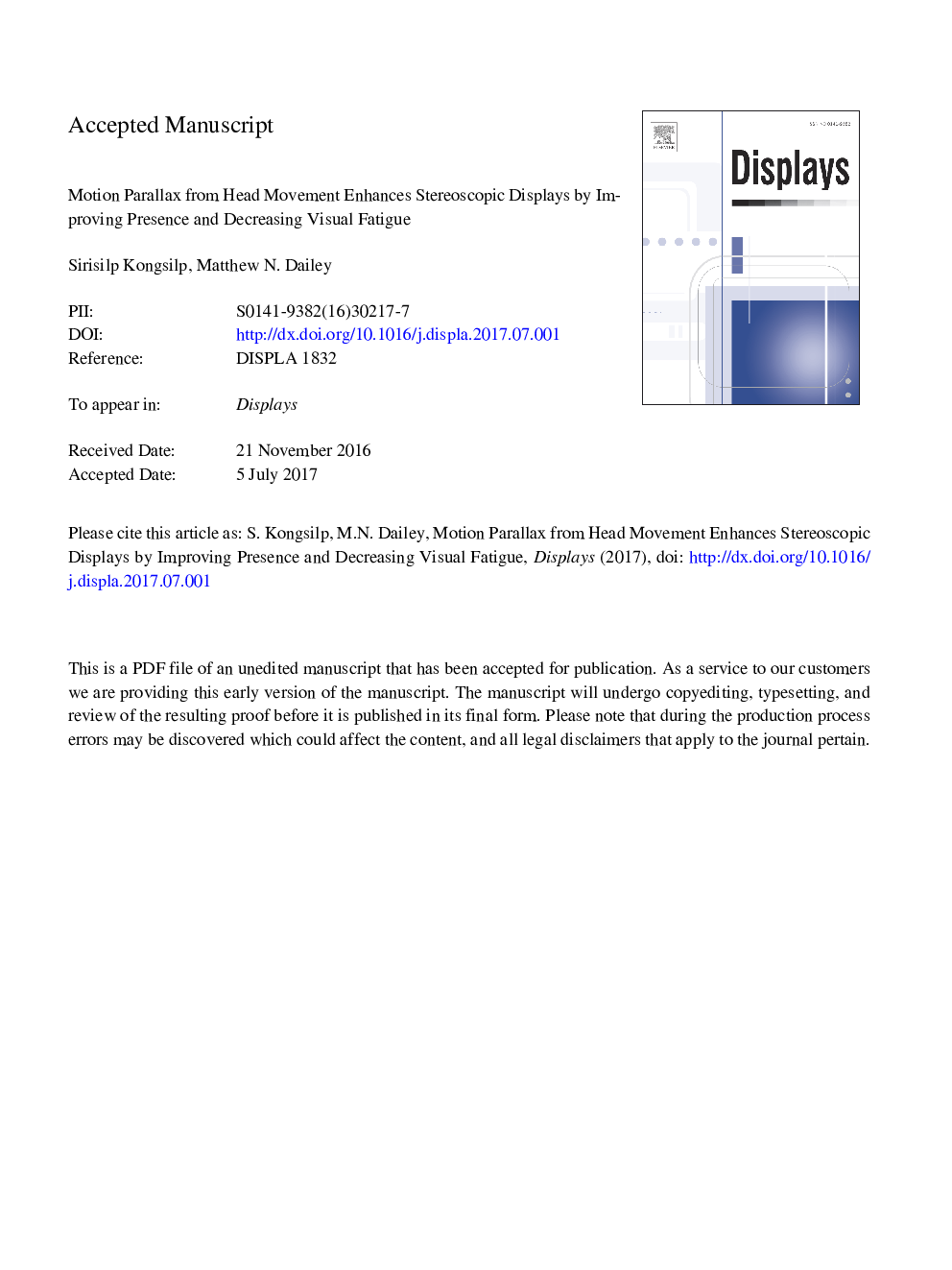| Article ID | Journal | Published Year | Pages | File Type |
|---|---|---|---|---|
| 4970574 | Displays | 2017 | 31 Pages |
Abstract
Virtual reality has advanced significantly recent years. Public attention and most academic studies of late have centered on head-worn VR. However, there are other VR modalities, and different modalities may be suitable in different situations. In this paper, we investigate Fish Tank Virtual Reality (FTVR) systems, which is close to readiness to be part of our everyday lives. In particular, stereoscopic displays and head tracking systems, some of the most important hardware components of FTVR systems, are now widespread commodities. This means that FTVR may soon become a platform for everyday applications. However, further understanding of the capabilities, limitations, and human factors of FTVR systems using modern commodity hardware is critical to the adoption of FTVR. Since one of the most important aspects of a FTVR system is how well it provides a sense of presence to users, we present a study that explores the role of motion parallax when combined with stereopsis in a FTVR system. We measure fatigue and subjective perception of presence using standard questionnaires. We find that users receiving both cues have lower visual fatigue and higher ratings for presence than those receiving stereo cues only. Measurements of participants' head movement during each task prove valuable in explaining the experimental findings. We conclude that motion parallax is important for enhancing user experience by lowering visual fatigue and increasing users' subjective perception of presence.
Related Topics
Physical Sciences and Engineering
Computer Science
Hardware and Architecture
Authors
Sirisilp Kongsilp, Matthew N. Dailey,
